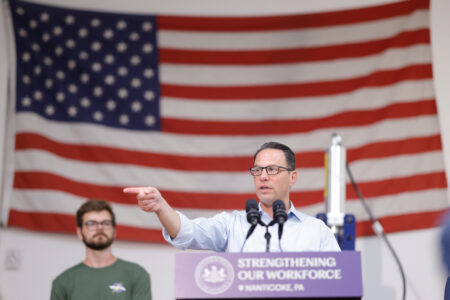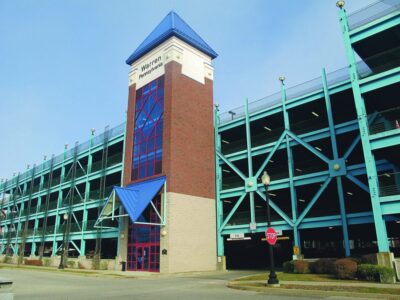LIttle known, often used forest service division faces elimination
A little-known division of the National Forest Service faces budget cuts in legislation still pending in Congress.
The State, Private and Tribal Forestry division’s budget would be eliminated in a proposed bill in the Senate. The Forest Service division deals most directly with pests that affect forests.
According to its website, the State, Private and Tribal Forestry is the federal leader in providing technical and financial assistance to landowners and resource managers to help sustain the nation’s forests. The federal investment leverages the capacity of state agencies and partners to manage state and private lands and produce ecological, social and economic benefits for the American people.
Part of that money goes locally to companies to invest in innovative ways to use lumber. Collins Pine in Kane, Pa., received a $300,000 grant to install dry kilns in 2024.
“We are very appreciative of the program,” said Jason Standley, director of Hardwood Lumber Operations, “It helps out in difficult times in the hardwood industry to stay competitive and keep providing good jobs for the people of Kane.”
Other companies in the Allegheny National forest region have received similar amounts to look into getting more fibers out of debarking operations or extract firewood from the forest.
Nationally, the State, Private and Tribal Forestry division funds research into wood energy and the use of advanced wood products, such as cross laminated timber, in building construction.
Science conducted by the network of federal research stations, institutes, laboratories, and experimental forests generates invaluable, publicly available research to understand the forest ecosystem, which informs management of forests under public and private ownership. It also leads to the development of American-controlled and owned innovations, empowering domestic producers to stay on the cutting edge of wood products and build new markets for the low-value woody biomass that must be removed to reduce the risk of catastrophic wildfire.
These activities are required under foundational laws for the Forest Service and include supporting the Forest Products Laboratory, an applied research hub that has been and continues to be an incubator for forest products, as well as individual research stations.
“Proposing to totally terminate these programs in fiscal year 2026 could end more than 150 years of data and investigation into understanding forests’ contributions to our communities, predicting future forest conditions used by federal and state managers, private landowners and industry, and the expansion of innovative wood usage.” claims an open letter to US Agriculture Secretary Brooke Rollins from Senate Interior-Environment Appropriations Subcommittee Ranking Member Jeff Merkley (D-OR), Senate Appropriations Committee Vice Chair Patty Murray (D-WA), Senate Energy and Natural Resources Committee Ranking Member Martin Heinrich (D-NM), and Senate Agriculture, Nutrition, and Forestry Committee Ranking Member Amy Klobuchar (D-MN).
The State, Private and Tribal Forestry division also helps small landowners with forest management objectives, including invasive species.
“This work is critical,” said Amy Shields of the Allegheny Hardwoods Utilization Group. “You cannot control an invasive plant in a national or state forest if there are reserves of it on adjacent private forests. State, Private and Tribal Forestry makes that possible. One of the biggest threats to forest health in the region is a tree called Glossy Buckthorn. This tree is incredibly dangerous for forest regeneration, it has expanded from 5,000 acres to 60,000 acres in just 10 years. It steals the sun from young ash and oak, changes the acidity of the soil, and generally outcompetes the native forest trees when they are young.”
It can take two to three treatments over two or three years to eliminate Glossy Buckthorn.
“Left unchecked, forestry professionals in the region agree that this invasive has the potential to devastate and forever change the region’s forest composition and health – and eventually all of Pennsylvania’s forestlands – and have an enormous impact on both the hardwood and tourism industries of the region and state.” according to the Allegheny Forest Alliance.
Some of the research they fund is obscure to those not in the field. The State, Private and Tribal Forestry division funded research into a type of Asian fruit fly called Spotted Drysophilia, which was first discovered in the area in 2012. Research looked into how the fly affected Black Cherry seeds, as well as their impact on other local fruits.
SPTF funds help people plan taxes around their forest land, look at invasives, plan how to use their forests, keep the local timber industry competitive, develop new forest products and more. Warren County, with its abundant forests, uses many of those services.




